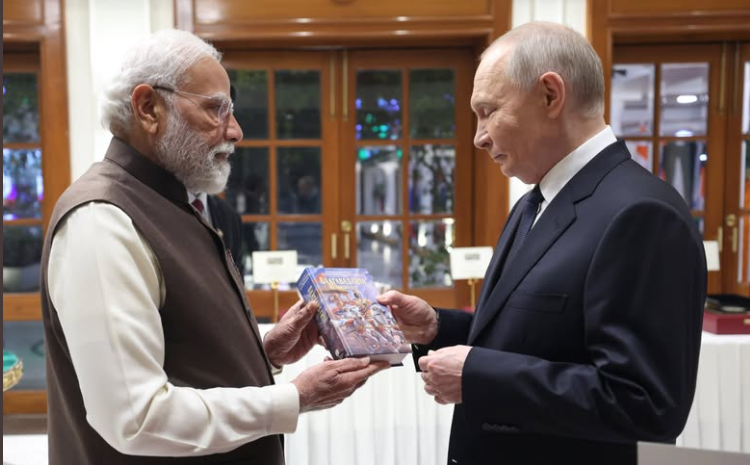India’s Rare Earth Dilemma: Breaking Free from China's Monopoly
- InduQin
- Jul 7
- 4 min read
China dominates the rare earth market with 69% of global production, influencing supply chains and prompting nations like Japan and India to reduce dependence. India, reliant on imports, is focusing on domestic production and international collaborations despite challenges like limited deposits, lack of heavy rare earths, and high costs. Initiatives like the ₹1,000 crore PLI scheme aim to boost magnet production, but economic viability remains a hurdle. Strategic efforts and sustained investment are critical for India to emerge as a global rare earth player.

The global rare earth metals market is dominated by China, a fact that has significant geopolitical and economic implications. With a 69% share in global production, China has leveraged its position to influence global supply chains, especially during the ongoing tariff wars with the United States. In contrast, the U.S. contributes 12% to global production, while Myanmar and Australia account for 11% and 5%, respectively. Myanmar’s alignment with China further consolidates Beijing’s control, giving them sway over 80% of the world’s rare earth output.
This dominance has forced other countries to rethink their strategies. For instance, Japan has successfully reduced its reliance on Chinese rare earths to 60% by partnering with Australia’s Lynas Corporation. Meanwhile, India, heavily dependent on China for these critical resources, is taking steps to minimize its vulnerability.
India’s Struggle for Rare Earth Independence
India has recognized the strategic importance of rare earth elements, particularly for advanced technologies such as electric vehicles (EVs), wind turbines, and defense equipment. To reduce dependency, the country is focusing on domestic production and international collaborations. However, India's journey toward self-reliance is fraught with challenges.
Limited Deposits and Technological Barriers
India currently produces around 2,900 tons of rare earth elements annually, all of which are light rare earths. Heavy rare earths, crucial for manufacturing high-performance magnets, are absent in India’s reserves. Coastal sands, the primary source of rare earths in India, have low mineral content, making extraction difficult and costly. A recent discovery in Gujarat revealed ultra-fine particles, unsuitable for commercial extraction. The Geological Survey of India (GSI) is now exploring inland regions, particularly Rajasthan, but substantial deposits have yet to be found.
Out of 51 locations surveyed in the past four years, only three have shown potential for neodymium and related rare earths. Even these sites are still in the preliminary exploration phase, with no confirmation of magnet-grade materials.
Industry and Production Challenges
IREL (India) Ltd, under the Department of Atomic Energy, is India’s sole producer of rare earth elements. However, their operations remain focused on extracting minerals like ilmenite, zircon, and rutile, which are used in other industries. Rare earth production is still in its infancy, with only 500 tons of raw materials earmarked for magnet production annually. This falls far short of India’s projected demand of 30,000 tons.
To address this gap, the government is developing a Production-Linked Incentive (PLI) scheme worth ₹1,000 crore to promote domestic magnet production. However, this investment is unlikely to meet demand unless domestic production scales significantly and achieves cost efficiency.
Economic Viability: A Major Roadblock
The economic feasibility of rare earth extraction is another hurdle. Global prices for rare earth metals have fallen sharply, making imports more cost-effective than domestic production. For example, India imported 53,700 tons of rare earth magnets in FY25 at a cost of ₹1,744 crore. In contrast, the ₹1,000-crore PLI scheme targets just 1,500 tons of magnet production—a financially unsound proposition unless production costs are drastically reduced.
Lynas Corporation, the largest producer outside China, also faced declining profits due to falling prices, highlighting the global economic challenges in this sector.
Strategic Moves and Future Prospects
India is taking proactive steps to mitigate its reliance on Chinese rare earths. Recent initiatives include reducing mining royalties to 1%, increasing exploration activities, and initiating auctions to attract private investment. Additionally, India is exploring international collaborations for rare earth resources in countries like Oman, Vietnam, Sri Lanka, and Bangladesh. A strategic partnership with the United States further underscores India’s commitment to diversifying its supply sources.
IREL, in collaboration with the Bhabha Atomic Research Centre (BARC), has begun developing samarium-cobalt magnets for defense applications. This pilot project, inaugurated by Prime Minister Narendra Modi, marks a crucial step toward building domestic capabilities.
Despite these efforts, India’s rare earth sector remains constrained by technological and regulatory challenges. The lack of advanced processing technologies and the high cost of production make it difficult to compete with China. However, once these barriers are addressed, India has the potential to emerge as a significant player in the global rare earth supply chain.
The Road Ahead
India’s increasing import of rare earth magnets in FY25 suggests a strategic stockpiling to counter potential Chinese export restrictions. While this approach has provided short-term relief, long-term solutions require sustained investment in exploration, technology, and infrastructure.
Achieving self-reliance in rare earth production is not just an economic necessity but a strategic imperative. With consistent efforts, India can reduce its dependence on China and position itself as a viable alternative in the global rare earth market. However, this journey will demand persistence, innovation, and robust government support over the coming years.







Comments